Illinois features quite a few rocks and minerals for the prospective collector, although the region is a bit light on gemstones. For those planning on heading out and getting some rockhounding done, however, the region offers some areas where great specimens can be pulled. It’s just a matter of tracking them down.
Let’s dig in with our guided list of the rocks, minerals, and gemstones of Illinois and help you get started on researching a good place to dig!
Minerals and Gemstones Found In Illinois
1. Fluorite
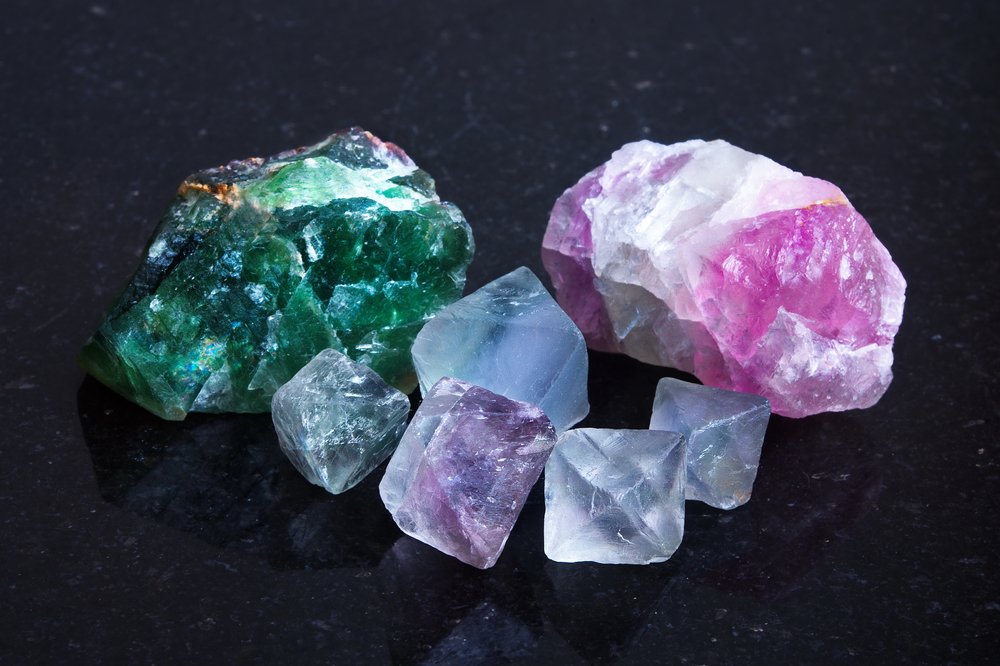
Fluorite is actually the state mineral of Illinois and has a lot of importance to the local economy. Collectors mainly know fluorite as a colorful, soft crystal but it has a ton of industrial uses that most aren’t aware of. Fluorite was often called fluorspar in older texts, and the name is still sometimes used for fluorite destined for industrial use rather than being collected as samples.
Fluorite tends to come in blue, purple, or red when it comes out of Illinois. It’s possible to find large, well-formed crystals in the regions where it comes from as well, a simple search will show you dozens of great examples of the mineral.
Fluorite is spread across the entire Southeastern portion of the state. There are over a hundred and fifty confirmed sites within a tiny region, places important to both commercial mining and for collectors to crawl over looking for that perfect sample. It just depends on the area, but there’s a lot of ground to cover.
Some of the best places to search for fluorite in the region are:
- Hardin County
- Pope County
- The region surrounding Cave-in-Rock State park
You don’t necessarily have to be anywhere near the above areas to find fluorite, but if you’re looking for a good location on public land they’re a great place to start.
2. Calcite
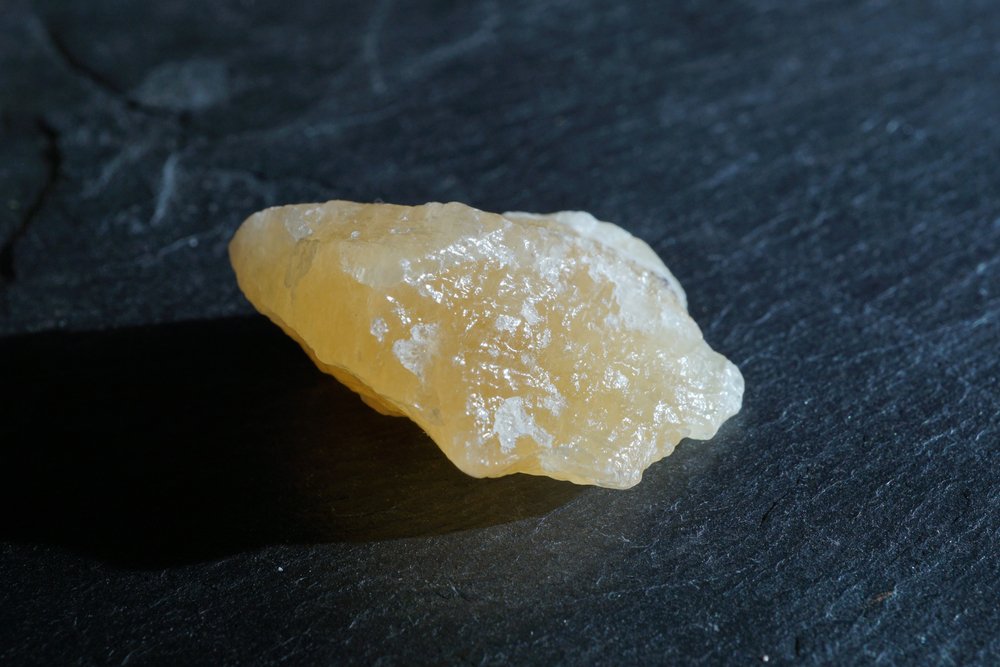
Calcite is a common mineral, simply a crystallized form of calcium carbonate. It’s very common, and collectability depends entirely on color and the individual crystal formations. While Illinois doesn’t seem to have any particularly unique colors, it is one of the few places where you can find the dogtooth spar form of calcite crystals on a regular basis.
Calcite is easy to overlook for some of us. It’s soft, often white in color, and it’s sometimes just considered a pest mineral when we’re cleaning things like quartz crystal formations. That said, when it forms into the right shapes with the right impurities it looks fantastic. Dogtooth spar and yellow-orange are both available in Illinois.
Calcite is concentrated in the Southeastern portion of the state and the Northwestern portion near Galena. There are also a few other deposits scattered around different parts of the region. In the Southeastern portion calcite sometimes occurs in interesting formations alongside fluorite, with the best hosting orange calcite on deep purple fluorite to create an interesting color effect.
If calcite is your aim, then you’ll want to try one of the following places:
- Near Galena
- Hardin County
- Quarries around Keokuk
These places all produce some interesting formations for the determined seeker.
3. Feldspar
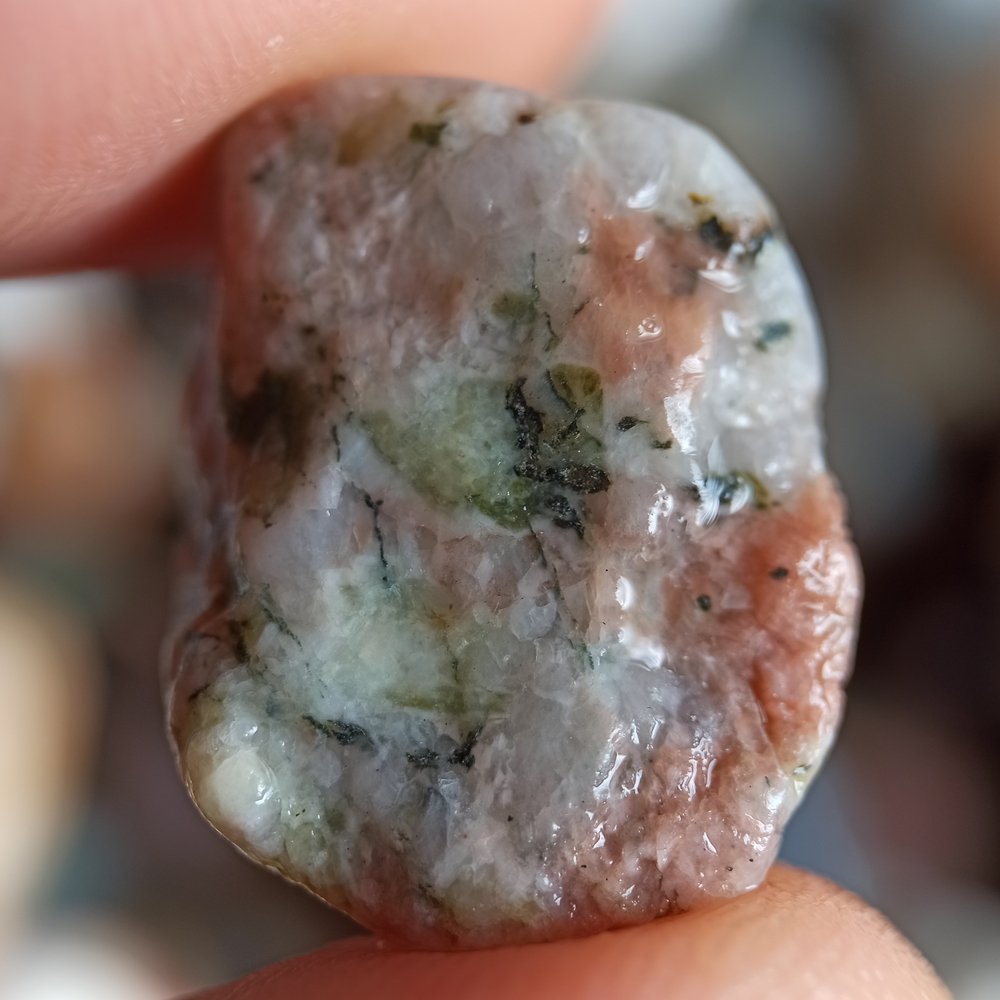
Feldspar is among the most common ingredients in the Earth’s crust. There is a ton of the stuff scattered throughout the planet in a bewildering array of different formations. Feldspar is a major component of many conglomerates, including major commercial products like granite.
Most of the feldspar that occurs in Illinois is locked into other stones. It’s also found in minute quantities in sands and soils around the state, just enough to be of commercial importance on occasion. The feldspar that occurs in the state isn’t any of the more specialized varieties like labradorite, unfortunately.
For those looking for a whole example of feldspar there are better states, but it’s found on occasion. The vast majority of larger feldspar in the state is held in alluvial deposits in creeks and riverbeds, as well as along glacier paths.
For that reason searching through river and creekbeds in the Northern portion of the state is your best bet for finding feldspar crystals. They also occur in small quantities in areas associated with fluorite, but neither is a sure thing when it comes to finding a sample. Your best bet is just to keep an eye out for formations while looking for other things.
4. Pyrite/Marcasite
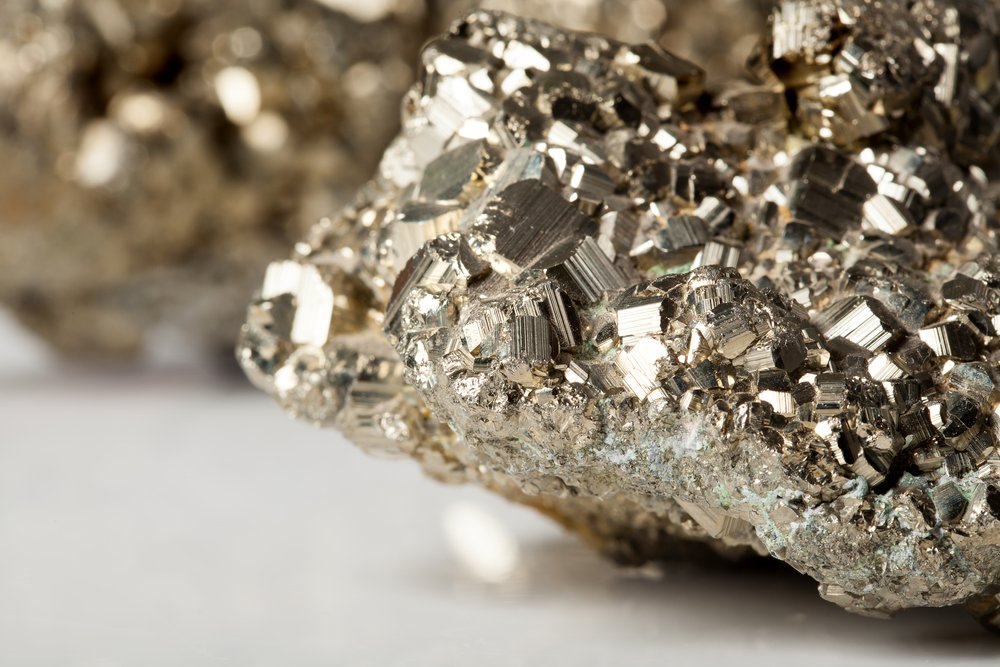
Pyrite and marcasite are in the same boat together: both are iron sulfide compounds with different iron ions in their matrix. They form as cubic crystals for the most part, often growing interlocked into a single attractive mass. Pyrite is best known as Fool’s Gold by laymen, for it’s brassy appearance and it’s frequent close association with native gold in natural deposits.
Marcasite is actually used in the jewelry business to refer to pyrite cut for jewelry. Actual marcasite is not often used, it’s too brittle compared to its gold cousin. When seen in jewelry it’s usually encased in chalcedony as some form of plume agate. Nipomo Agate is a good example of that form of marcasite. It’s marcasite encased in orange chalcedony.
Pyrite can occur as “suns” as well as the more well-known cubic formations. These are discs that radiate from a central point, often interlocked with others. While discs of ½” to 2” in size are known in ancient marine deposits all over the planet, Illinois is unique in producing large quantities of larger discs. Some of these even display iridescence.
If you’re looking for pyrite in Illinois, try the following areas:
- Near Sparta
- Hardin County
- Near Rosiclare
Sparta, Illinois is the only known location, in the world, where pyrite discs of large size are regularly found. Cubic formations are still commonly found in other areas.
5. Galena
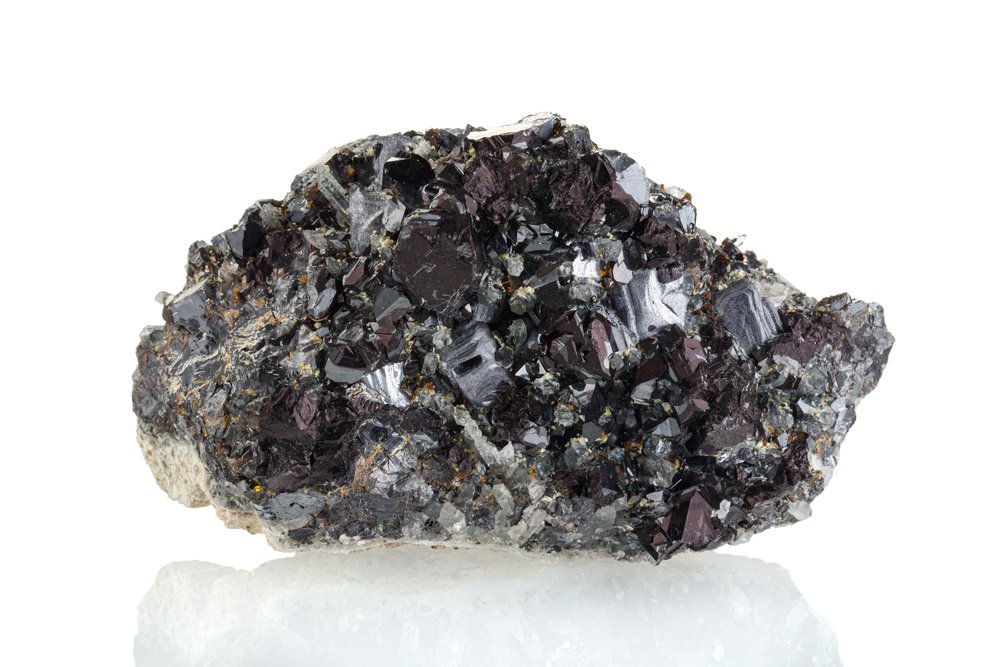
Galena is a simple ore of lead, bearing the chemical formula of PbS or lead sulfide. Galena refers both to the specific mineral and to the ore in general, the latter having other component parts that make it a little bit more complex than a simple piece of lead sulfide. Galena is known to co-occur with sphalerite.
Galena ore has another use than extracting lead. In some cases, galena can actually contain a substantial portion of silver. This ore is referred to as argentiferous galena, and it’s actually an important part of worldwide silver production. In Illinois it’s primarily a source of lead, lacking any substantial silver content in most cases.
Galena is an important ore, but it’s also been used by humans for a long time. It functions as a pigment when ground, and also in ceramic glazes. It’s rarely used for those purposes these days, as we better understand the risk of lead to the human body. If you have a sample be sure to wash your hands after handling it, but otherwise the lead is bound into a salt with the sulfide and is harmless unless you ingest or inhale particles.
Galena is found in the following places in Illinois:
- Galena
- Hamilton
- South by Southeast of Harrisburg
Areas where mines dump stone are likely to be your best bet as an amateur, but don’t discount road cuts if they’re near mines and safe to rockhound.
6. Sphalerite
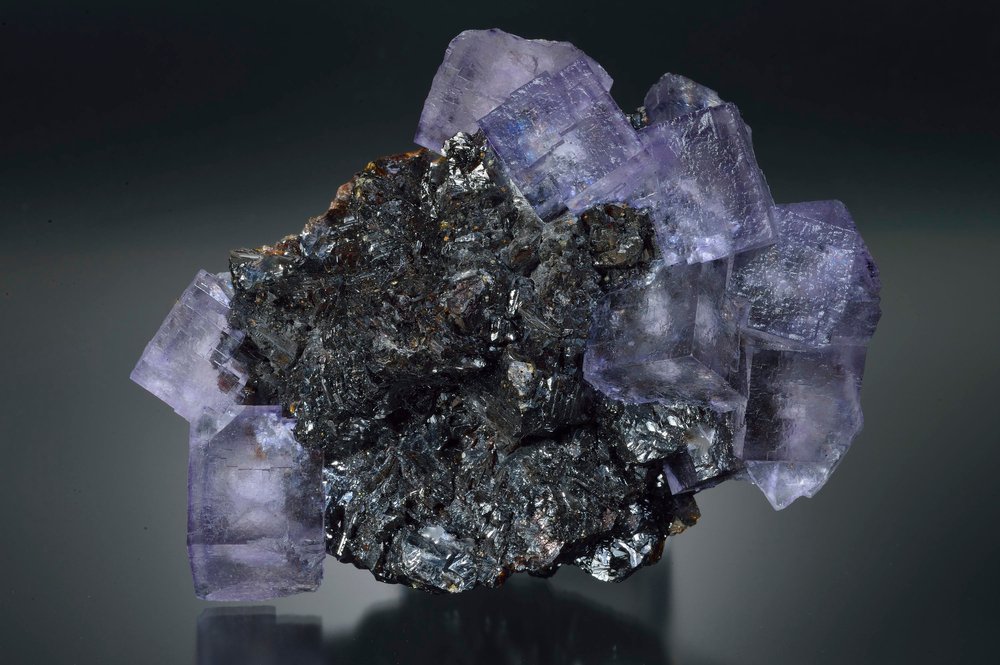
Sphalerite is an ore of zinc that occurs in close combination with galena in many cases. Sphalerite appears as cubic crystals with a shimmering black surface similar to hematite. It’s primarily used for its high zinc content, along with the rare earth metals like cadmium that are often bound in the same stones.
Sphalerite also sometimes occurs as crystals with higher purity and some coloration. The colors are generally either a deep red or a light blue, unfortunately, that doesn’t seem to be the case for Illinois sphalerite. It’s mostly found in the iron-rich, black form described above.
Roughly 95% of the globe’s supply of zinc is extracted from sphalerite ore. While not seen on its own very often, zinc coating is used for galvanized steel to avoid corrosion and added to copper to create brass in the right ratios. It’s an important metal, but one that’s often behind the scenes.
Sphalerite occurs in roughly the same areas as galena in Illinois, so the areas to look at are much the same. Galena, in particular, seems to have a lot of sphalerite mixed in with the lead ore, but the best collectible samples seem to come from the Southeast in Harris County.
7. Quartz
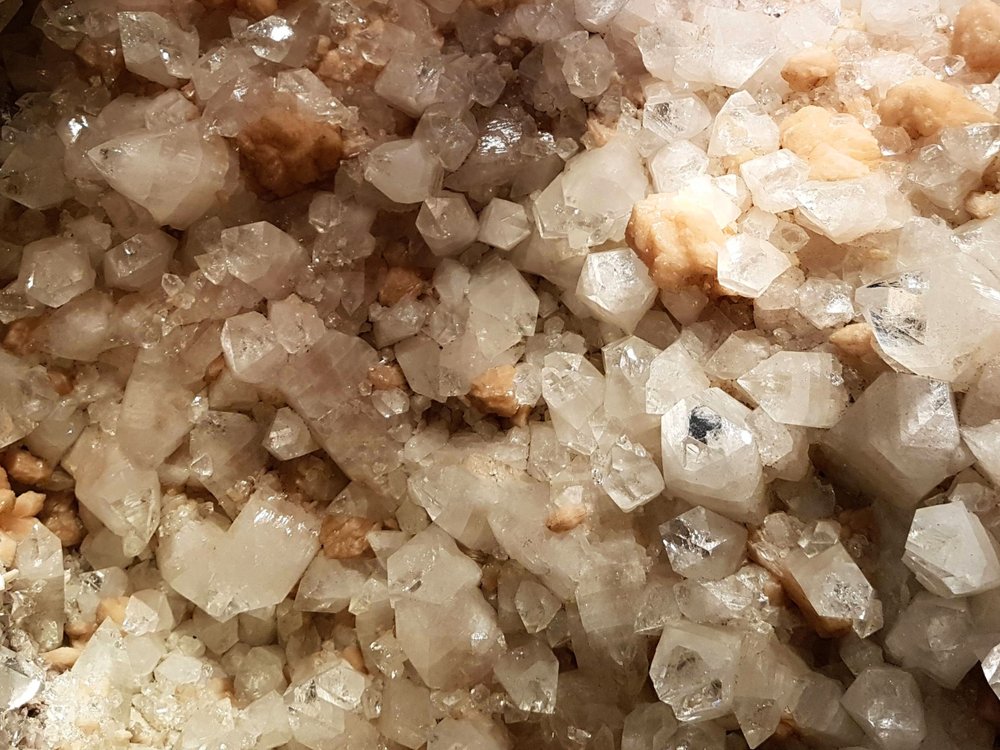
Quartz is an iconic crystal. The hexagonal, clear, colorless crystals are present in most rock collections across the globe and it sometimes seems like they’re nearly everywhere. After all, all that’s needed for quartz to form is a lot of pressure, time, and silica. The latter is the most common component of the earth’s crust so it’s unsurprising that quartz is found in so many places.
Quartz comes in a wide variety of different colorations. In Illinois, unfortunately, it appears that there is very little amethyst or other colored quartz. Instead, the quartz generally occurs in geodes rather than as crystal points trapped in pegmatites or pockets. It can also be found in open vugs in limestone formations.
Geodes vary a lot depending on the local area. In some cases there will be more than just quartz on the interior, often there will be a mixture of quartz and other common crystals like calcite and fluorite. The Illinois border is just across the river from Keokuk, Iowa where the famous Keokuk geodes are found.
For those wanting geodes of their own, the following locations are a good bet:
- Crystal Glen Creek
- Hamilton, South of the Keokuk Bridge
- Spillman Creek
Geodes in these locations are often found in both exposures in the bedrock and loose in creeks and rivers, making it relatively easy to find geodes nearby.
8. Limonite
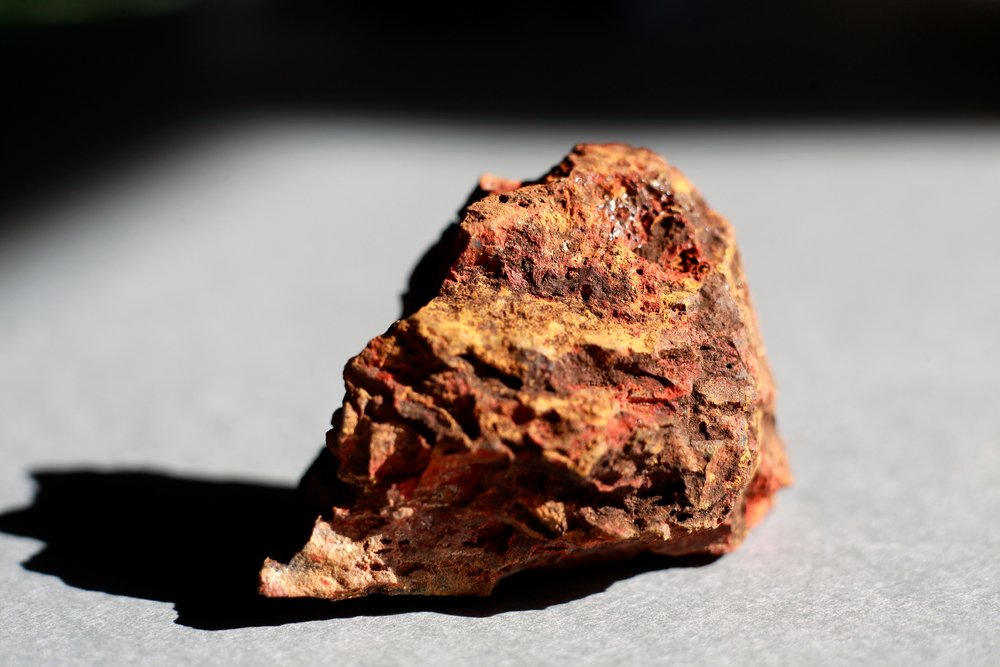
Limonite is one of the primary ores of iron, having been used since antiquity to create iron and steel. It’s a hydrated form of ferrous oxides and ferrous hydroxides combined together. The most common form is a soft-ish yellow-orange stone. Some of the better samples also display a botryoidal nature.
Limonite is harder to extract than the other two principal ores of iron. Both magnetite and hematite produced better iron in antiquity, and it took blast furnaces to really bring limonite into its own when it came to the production of steel. Still, limonite has been used since antiquity since there’s simply so much of it available.
The limonite deposits in Illinois haven’t been exploited since the 1800s. There are simply better sources of ore available across much of the United States, it’s not economically viable to bring it to the light in this case. Instead, it remains something of a curiosity and a side-find among mines in the same regions.
If you’re looking for limonite, a good bet is there. Hardin County contains most of the limonite in the state of Illinois.
9. Agate/Jasper/Chalcedony
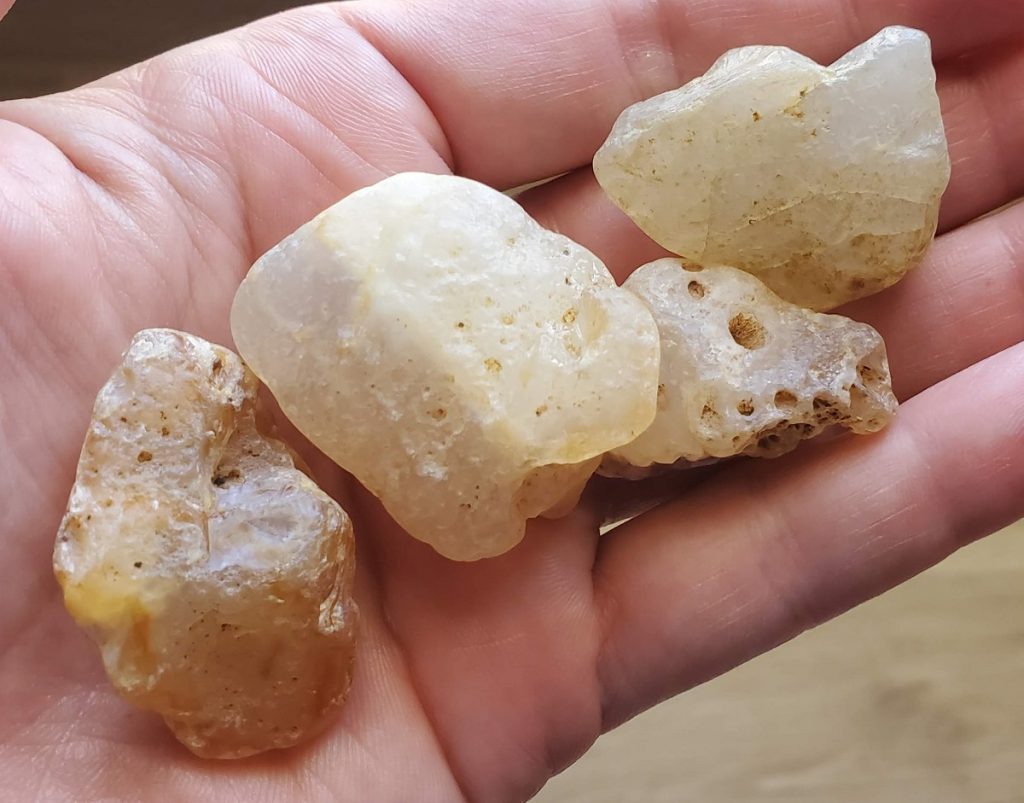
Cryptocrystalline silicas are highly varied, and the debates about what qualifies each type rages on in many rockhound circles. We’ll just sidestep that, but I’ll also note that a fair majority of the material that emerges from Illinois is one hundred percent opaque. This would usually qualify them as jasper, but there’s also banding present in some opaque samples. In other words… well, it’s kind of a mess when it comes time to classify them.
What is known is that there’s not a lot of classic fortification agate or chalcedony in Illinois. Samples tend to be red, but there are also earth tone examples floating around. I’ve also seen examples of dendritic agate and eye agate or jasper that were from Illinois originally. There doesn’t seem to be any one dominant “type” of these stones in the state.
The vast majority of these stones that come from Illinois are found in the Western portion of the state near the border. The best place to go in Illinois to find agate is the Chain of Rocks Gravel Bar in Madison County. You’ll also find samples further north and south of this location on the banks of the Mississippi.
While there is some, I’ve yet to see any proof of extensive amounts of jasper or agate in other creeks and rivers across the state. That would indicate they’re washed down from regions farther north in the past.
- Online rock and mineral club for collectors of all levels!
- Find community with like-minded rock and mineral enthusiasts.
- Monthly Giveaways!
- Free Access to Entire Digital Library of Products (current and future products)*


